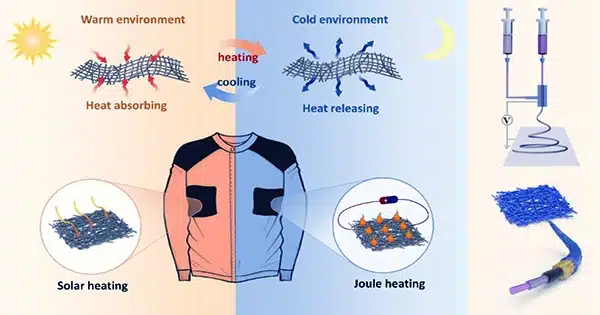Researchers at the University of Waterloo have created a novel smart material that can be triggered by both heat and electricity, making it the first material to ever react to two separate stimuli.
The innovative design opens the door for a wide range of possible uses, such as winter-appropriate apparel that heats up as you walk from the car to the workplace and collision-resistant automobile bumpers.
The programmable fabric is manufactured inexpensively from polymer nano-composite fibers made from recycled plastic, and it can change color and form in response to inputs.
“As a wearable material alone, it has almost infinite potential in AI, robotics, and virtual reality games and experiences,” said Dr. Milad Kamkar, a professor of chemical engineering at Waterloo. “Imagine feeling warmth or a physical trigger eliciting a more in-depth adventure in the virtual world.”
The innovative fabric design is the result of a harmonious marriage of soft and durable materials, with a woven framework made of highly developed polymer composites and stainless steel.
To weave the smart cloth, researchers developed a mechanism comparable to a standard loom. The method that results is incredibly adaptable, allowing for creative freedom as well as macro-scale control of the fabric’s qualities.
In comparison to earlier systems, the fabric can also be triggered by lower voltages of electricity, which increases its energy efficiency and lowers its cost. It is also appropriate for use in biomedical devices and environment sensors since lower voltage enables integration into smaller, more portable devices.
Kamkar, head of the Multi-scale Materials Design (MMD) Centre at Waterloo, stated that the concept of these intelligent materials was initially developed and birthed from biomimicry research.
This serves as proof of concept that our novel material may interact with the environment to monitor ecosystems without causing harm by sensing and responding to environmental cues like temperature.
The next stage for researchers is to enhance the fabric’s shape-memory capabilities for use in robotics applications. Building a robot that can efficiently carry and transfer weight while carrying out duties is the goal.
















